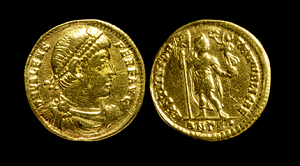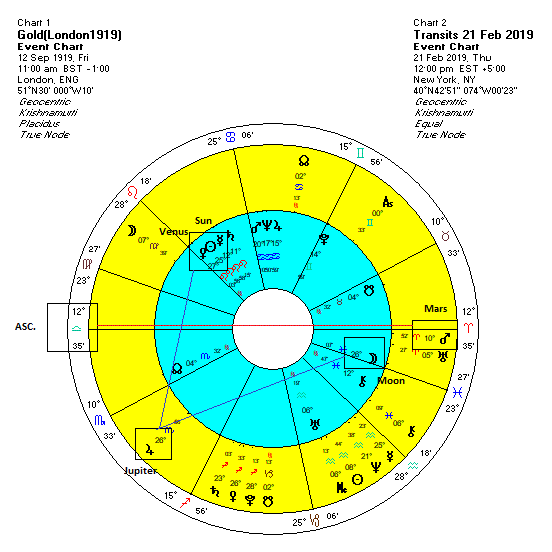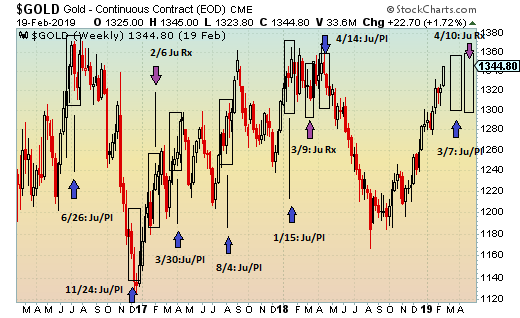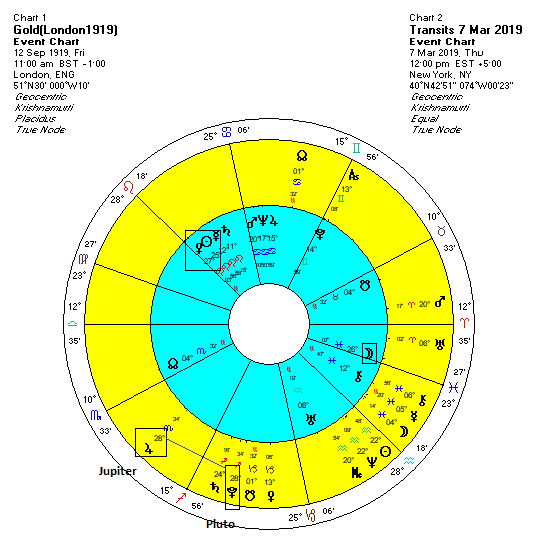 (22 February 2019)
With all the talk about the economy slowing down and the possibility
of a recession, it may be a good time to reconsider gold. As the Fed
and other central banks shift their policies towards monetary easing,
(i.e. lower interest rates, more asset purchases, holding higher
amounts of debt on their balance sheets), gold may be in a better
position to rise in value. As central banks intervene by printing more
money, the amount of debt increases. This devalues the currency and
thereby increases the risk of inflation. Enter gold, as the safe haven
and traditional store of value which acts as a hedge against inflation
and currency debasement.
(22 February 2019)
With all the talk about the economy slowing down and the possibility
of a recession, it may be a good time to reconsider gold. As the Fed
and other central banks shift their policies towards monetary easing,
(i.e. lower interest rates, more asset purchases, holding higher
amounts of debt on their balance sheets), gold may be in a better
position to rise in value. As central banks intervene by printing more
money, the amount of debt increases. This devalues the currency and
thereby increases the risk of inflation. Enter gold, as the safe haven
and traditional store of value which acts as a hedge against inflation
and currency debasement. Gold has steadily risen over the past six months from a low of $1167 last August to a high this week of $1350. Gold fell sharply on Thursday to $1327, however, but remains above its key support level of $1300. Can gold continue to move higher or is it destined to slip back into its previous trading range?
There are several different astrological approaches we can use to forecast the future price of gold. None is perfect, but each offers a window into the influences that underlie the main price patterns. As I have elaborated previously, there are at least three workable horoscopes for gold: 1) the GLD ETF launched in 2004; 2) the first trade of gold in the post-gold standard era in 1974; and 3) the London gold fix from 1919 which was the first globally recognized price. All three are useful, but here I just want to focus on the 12 September 1919 chart. I have often found this chart to reflect price fluctuations according to the relative influences of positive and negative planets.

The current rally is quite clearly seen through the transit of Jupiter (26 Scorpio) and its exact 120 degree aspect to the Moon (26 Pisces). It also forms a square alignment with the Sun and Venus (25-27 Leo). While there are other layers to the gold price equation over the past six months, this is certainly important. Jupiter is the most bullish planet and its exact alignments are frequently seen in up trends. Interestingly, today's decline may also be seen in this chart as Mars (11 Aries) opposes the Ascendant (12 Libra). Mars is often a malefic planet, and its opposition aspect, albeit brief, is even more bearish. While these aspects do not work unfailingly, they definitely load the dice in a particular direction.
In the coming weeks, Jupiter is due to move a little past its alignments with the Moon and Sun-Venus but it will remain in close range. This is likely to support prices and prevent a deep decline in the near term. And it could also reflect further upside, although that may be a less decisive influence.
But the transit chart itself can also provide important clues for future price direction. A strong Jupiter influence is often bullish, especially when it combines with one of the slower moving planets -- Rahu, Ketu, Uranus, Neptune, and Pluto. Jupiter stations also tend to be more bullish as Jupiter is moving very slowly for a period of weeks.
Jupiter's retrograde station may well have a special bullish association with gold. The retrograde station occurs once a year and marks the moment when Jupiter ceases its eight-month long forward movement and begins its four-month long backwards journey in the sky as seen from the Earth. Gold's first famous historical peak of $850 in early January 1980 occurred just two weeks after a Jupiter retrograde station in Dec 1979. And it's all-time high of $1920 in September 2011 took place just one week after its turned retrograde.

Recently, the Jupiter Rx station and the Jupiter-Pluto alignments have been occurring close together. In 2018, these three factors occurred within a four-month span. This clustering happens because of the narrow degree difference between the Jupiter station and Pluto. In 2019, this will occur within a narrower two-month time window. Jupiter will align with Pluto on March 7th and then turn retrograde on April 10th. Once it moves backwards, it will again align with Pluto in early May.

Generally, the Jupiter Rx station and Jupiter-Pluto are bullish influences. As the chart below suggests, they tend to occur during up trends or near tops. There are exceptions, of course, since the impact of the key natal horoscopes (e.g. London 1919) also play a role in shaping the direction of prices. But I would think the prospects for gold are fairly bullish in the coming weeks due to these Jupiter influences. And it is possible we could see the formation of an interim top from March to May, as was the case in 2018.
In any event, a reversal lower is probably more likely in the weeks after the Jupiter Rx station on April 10th since Saturn will become more prominent after that date as it conjoins Ketu (South Lunar Node) and Pluto. Whether the up trend can continue into May and the final Jupiter-Pluto alignment in this series is a more complex question.
Weekly Market Forecast
US stocks are remained stubbornly high so far this month as the Trump administration continues to dangle the carrot of an imminent China trade deal. Indian stocks have been weaker with election uncertainty and concerns about slowing growth. While I have been generally bullish about early 2019, I would have thought we would see more downside this month, particularly in the US.
Next week (Feb 25-Mar 1) does contain some potentially tense alignments so perhaps we will finally see some selling. The Venus-Ketu conjunction early in the week is a possible indicator of trouble, although I would not say it is exactly bankable. Rahu and Ketu are more unpredictable in their effects so we could easily see stocks rise in the early going. The mid and late week conjunction with the Node of Saturn is more clearly troublesome and should coincide with at least one significant down day.
For more details, please check out my weekly subscriber newsletter which is published every Saturday (EST). I offer short and medium term analysis of US and Indian stocks, along with currencies, oil and gold.